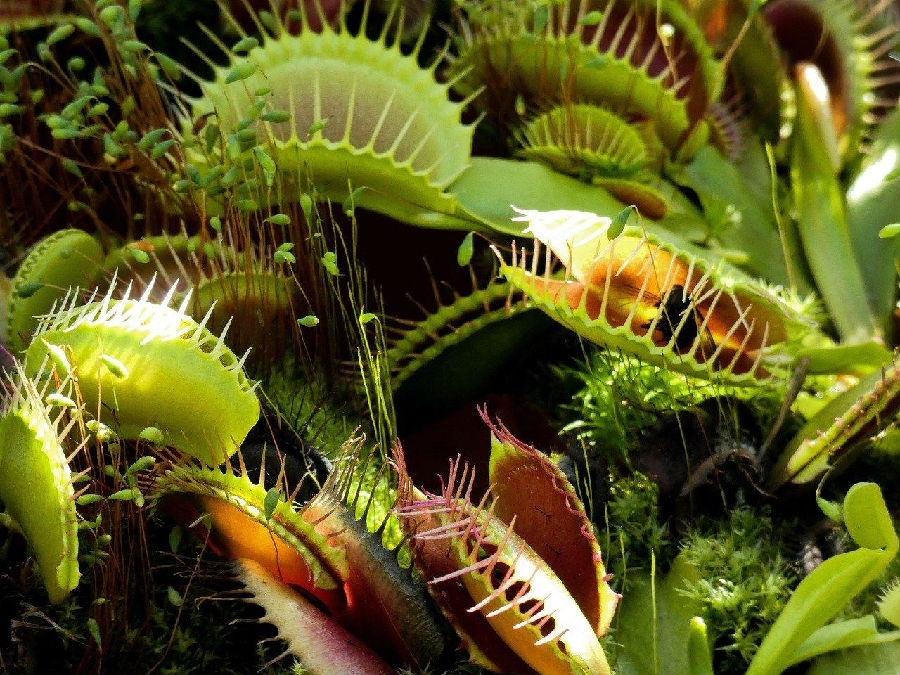(单词翻译:单击)
听力文本
New research sheds light on how carnivorous plants like the Venus fly trap developed a taste for meat. A study from the University of Wurzburg in Germany suggests that subtle changes in the genetics of plants led to some becoming carnivorous. These changes led to the development of some of nature's most ingenious species. Carnivorous plants adapted novel and devious ways to entice and snare insects. The Venus fly trap uses clam-like leaves that snap shut when an insect crawls between them. The pitcher plant is shaped like a vase - insects go inside and then cannot crawl up the slippery insides. The sundew plant has long sticky leaves, which roll up after insects get stuck on them.

Researchers in a variety of fields collaborated in the study. They included computational evolutionary biologist Jörg Schultz and plant biologist Rainer Hedrich. They sequenced and compared the genomes of carnivorous plants to non-carnivorous plants. They discovered that meat-eating plants developed from the same common ancestor about 60 million years ago. Dr Schultz said: "We were able to trace the origin of carnivorous genes back to a duplication event that occurred many millions of years ago in the genome of the last common ancestor of the carnivorous species." Dr Rainer added: "The function of these genes is related to the ability to sense and digest animals and to utilise their nutrients."
译文由可可原创,仅供学习交流使用,未经许可请勿转载。
重点解析
1.New research sheds light on how carnivorous plants like the Venus fly trap developed a taste for meat.
sheds light on 阐明
Darwin's book sheds light on the evolution of human beings.
达尔文的书解答了人类演化之谜。
2.Researchers in a variety of fields collaborated in the study.
collaborate 合作
Success is heavily dependent on skillful collaboration.
成功的口译仰赖合作无间的伙伴。
参考翻译
新研究揭示了,像捕蝇草这样的肉食植物如何产生了食肉的嗜好。德国维尔茨堡大学的一项研究表明植物基因上的细微变化导致一些植物变成了肉食性植物。这些变化导致了自然界一些最具独创性的物种的发展。肉食植物采用了新颖且狡猾的方式诱捕昆虫。当昆虫爬到叶子之间时,捕蝇草像夹子一样的叶子就会迅速闭合。猪笼草的形状像一个花瓶——昆虫进入到里边,在光滑瓶身内无法向上爬行。茅膏菜的叶子又长又粘,昆虫被困在上边后,叶子就会卷起来。
不同领域的研究人员在这项研究中展开了合作。他们包括计算进化生物学家Jorg Schultz以及植物物学家Rainer Hedrich。他们对食肉植物和非食肉植物的基因组进行了排序和比较。他们发现,食肉植物大约在6000万年前由同一个共同祖先进化而来。Schultz博士说到:“我们能够追溯到食肉基因的起源,追溯到百万年前肉食性物种最后一个共同祖先基因组中的复制事件。”Rainer博士补充道:“这些基因的功能与感知并消化动物,利用它们营养素的能力有关。”


